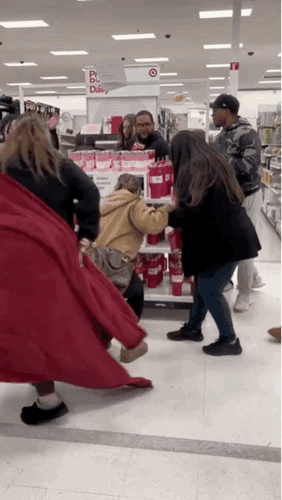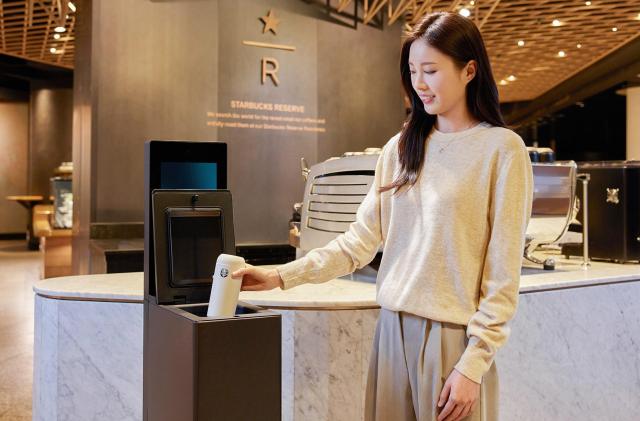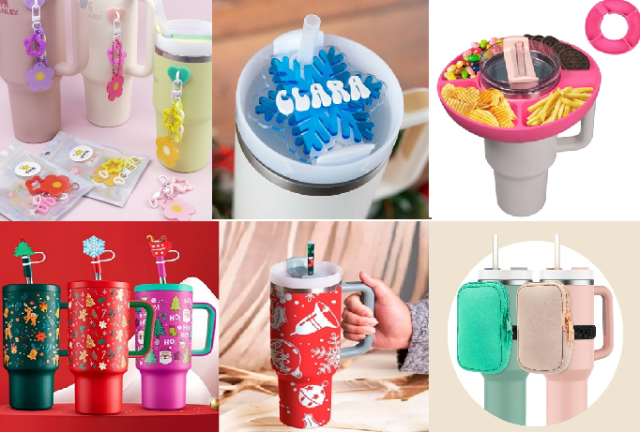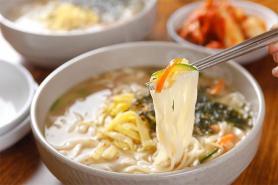
Yena Park, a Pilates instructor in her 20s, is one of the most fervent aficionados. She started using a Starbucks tumbler three years ago because it helped enhance the taste and temperature of her beverages. “But now that this has become a habit, I not only get discounts from cafes but also feel proud, like I’m doing something good for the environment,” she said.
The tumbler craze first emerged around 2018, driven by growing environmental awareness and government regulations on single-use cups. Starbucks’ limited cherry blossom edition line of tumblers released that year enjoyed huge success, igniting a fervor among young women.
Korea’s strong cafe culture also played a role. Koreans primarily consume coffee in cafes, which often serve as workspaces and study areas. Seoul has about 18,000 cafes, or roughly 1.8 for every 1,000 residents. “In Korea, you can basically walk into a cafe within a 3-minute radius,” said Jenn, a foreign national.
The tumbler market hit a second boom in 2022, led by colorful and visually vibrant tumblers, savvy digital marketing and social media influencers. Sales grew over 30 percent year-on-year, as the product evolved beyond its practical use to become a hot fashion item. Consumers share their tumbler collections and offer reviews of the latest releases on social media, spurring others to join the trend.
“I can’t resist buying new tumblers because every season has appealing designs,” said Kang, 29, an avid tumbler collector. She still has 13 tumblers left to reach her goal of 50. “They’re great for gifting to others, and when there are limited editions, I buy them just in case,” she said.

The tumbler frenzy has been further fanned recently by the popularity of cups from Stanley, the American brand long associated with rugged outdoor gear. Its rise was catalyzed when a TikTok video went viral in November 2023 showcasing its tumbler’s durability amidst car wreckage.
In the video shared by user Danielle, amid the charred remains of her car, a Stanley tumbler stood unscathed, ice still clinking inside. The video garnered over 70 million views, catapulting the brand into the spotlight. Stanley sent a new car and more cups to Danielle.
This newfound fame led to collaborations with celebrities, including designer Joanna Gaines and country music star Lainey Wilson. Grammy Award-winning Olivia Rodrigo said in GQ Magazine, “I was TikTok influenced to buy this Stanley cup. I was like, ‘I need this, it looks like it will change my life,’ and it completely did.”

Stanley’s limited-edition Valentine’s Day release at Target stores sparked scenes reminiscent of Black Friday sales. This frenzy has birthed a lucrative resale market, with some tumblers fetching triple their retail price. A woman in Roseville, California, was arrested in January for allegedly stealing 65 Stanley tumblers.
“Using a Stanley cup really does improve the quality of life,” said Sunny Han, a pharmacist in her 50s living in Seoul. She had no intention of buying a Stanley tumbler just to follow the trend but was surprised after trying it once. “Even after a day on a sweltering golf course, there’s still ice in my cup until the next day.”

Major Korean brands were quick to capitalize on the phenomenon. Starbucks Korea released limited-edition tumblers for special occasions and location-specific designs that have become popular souvenirs among tourists.
LG Electronics, a leading home appliance maker, developed a tumbler washing machine called MyCup in collaboration with Starbucks Korea, the Ministry of Environment, and the Natural Circulation Alliance.
MyCup has been used in select Starbucks stores on a trial basis since late 2022 and will be installed in all Starbucks locations across the country by 2026.
The washer offers two cleaning options: a quick 30-second cycle and a thorough wash-and-dry cycle, both using 65°C water. Users can insert tumblers upside down and select their preferred cycle via a touch screen or app.


Authorities are also jumping on the bandwagon. Seoul City launched a new initiative this month to incentivize consumers to use personal tumblers in cafes. Consumers who order drinks in personal vessels and pay with Seoul Pay will receive benefits of 400 won or more. This includes cafe discounts of at least 100 won combined with an additional 300 Seoul Pay points, usable as cash, provided by the city.
"We will support citizens and small business owners in creating an environment where they can easily and casually use their own cups in their daily lives," said Kwon Min, a city official in charge of the program.
Beyond functionality, tumblers have evolved into personal statements, inspiring trends like tumbler decorating and a booming market for accessories. Consumers choose tumbler colors to match their outfits and personalize their containers with various accessories that express their identity.
For example, sales of keychain attachments and ‘Stanley Fanny packs’ for cup bodies have soared, allowing people to carry just their tumbler with their phone and cards inside when going out.
Moreover, accessories like silicone spill stoppers, name tags, and silicone snack bowls that attach to the tumbler have gained popularity, with seemingly endless accessory options.

In a TikTok video that went viral in January, Danya Motycka, an Ohio woman, said her nine-year-old daughter faced peer pressure over her Christmas gift, a budget-friendly water bottle from a discount retailer. The child’s classmates, boasting newly bought Stanley cups, mocked hers, leading to her request for an upgrade.
The proliferation of tumblers marks a remarkable shift in consumer behavior in a country that is struggling with excessive use of disposable cups and plastic waste. However, experts caution the environmental benefits of the tumbler infatuation are not guaranteed.
“Tumblers are only beneficial for the environment when used properly. In Korea, where plastic production is relatively easy, making a tumbler actually requires more carbon and can be more environmentally destructive,” says Kim Kyoung-min , a legislative researcher with the Environment and Labor Team at the National Assembly Research Service.
“Buying a tumbler and using it only a few times before discarding it is worse than using plastic cups. Consistent use of a single tumbler is what truly helps the environment,” she adds.
Copyright ⓒ Aju Press All rights reserved.




